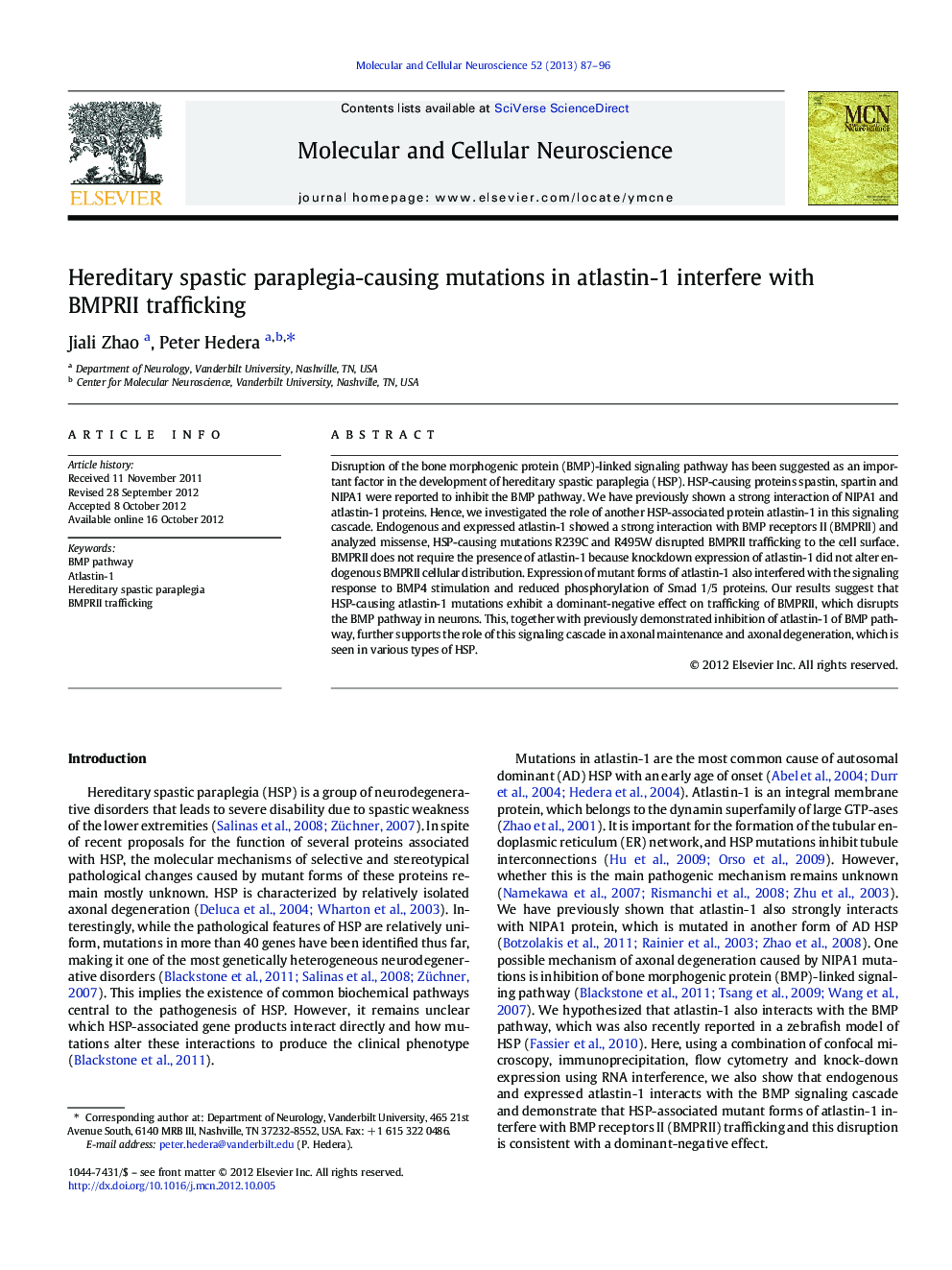| Article ID | Journal | Published Year | Pages | File Type |
|---|---|---|---|---|
| 2198573 | Molecular and Cellular Neuroscience | 2013 | 10 Pages |
Disruption of the bone morphogenic protein (BMP)-linked signaling pathway has been suggested as an important factor in the development of hereditary spastic paraplegia (HSP). HSP-causing proteins spastin, spartin and NIPA1 were reported to inhibit the BMP pathway. We have previously shown a strong interaction of NIPA1 and atlastin-1 proteins. Hence, we investigated the role of another HSP-associated protein atlastin-1 in this signaling cascade. Endogenous and expressed atlastin-1 showed a strong interaction with BMP receptors II (BMPRII) and analyzed missense, HSP-causing mutations R239C and R495W disrupted BMPRII trafficking to the cell surface. BMPRII does not require the presence of atlastin-1 because knockdown expression of atlastin-1 did not alter endogenous BMPRII cellular distribution. Expression of mutant forms of atlastin-1 also interfered with the signaling response to BMP4 stimulation and reduced phosphorylation of Smad 1/5 proteins. Our results suggest that HSP-causing atlastin-1 mutations exhibit a dominant-negative effect on trafficking of BMPRII, which disrupts the BMP pathway in neurons. This, together with previously demonstrated inhibition of atlastin-1 of BMP pathway, further supports the role of this signaling cascade in axonal maintenance and axonal degeneration, which is seen in various types of HSP.
